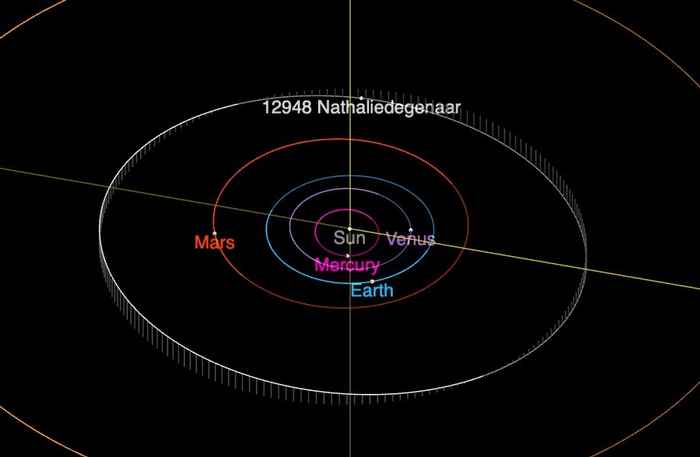Asteroid named after UvA astronomer Nathalie Degenaar
4 August 2025

The vast majority of asteroids orbit the Sun between the planets Mars and Jupiter, in what is known as the asteroid belt. The largest objects have diameters of several hundred kilometers, but the overwhelming majority are only a few kilometers across. Asteroids with well-determined orbits are assigned an official number — currently, there are no fewer than 811,552 of them. Of these, only about 25,000 also have an official name. The naming of asteroids is overseen by the IAU Working Group on Small Body Nomenclature (WGSBN).
The asteroid named after Degenaar, number 12948, has a diameter of approximately five kilometers and completes an orbit around the Sun in about five years, at a distance of over 800 million kilometers. The object was discovered on March 26, 1971, by the Dutch astronomer couple Ingrid van Houten-Groeneveld and Cees van Houten, based in Leiden. Between the 1950s and 1970s, they identified no fewer than 4,643 asteroids on photographic plates. These images originated from the Palomar Observatory in California (United States) and were taken by the Dutch-born astronomer Tom Gehrels.
Degenaar received this honour in part thanks to her enthusiasm and dedication to making science accessible to a broad audience. She does so through traditional media such as radio, newspapers, and magazines, as well as through modern platforms like podcasts, YouTube, and TikTok.
IAU press release (released op 22 juli, with reasoning behind namings)
https://www.wgsbn-iau.org/files/Bulletins/V005/WGSBNBull_V005_017.pdf
NOVA press release
https://www.astronomie.nl/nieuws/17-nieuwe-nederlandse-planetoiden-4606
Website of the IAU Working Group Small Body Nomenclature (WGSBN)
IAU asteroid-lookup database
https://minorplanetcenter.net/db_search/show_object?object_id=12948
Jet Propulsion Laboratory (JPL) asteroid lookup database
https://ssd.jpl.nasa.gov/tools/sbdb_lookup.html#/?sstr=12948&view=OPC